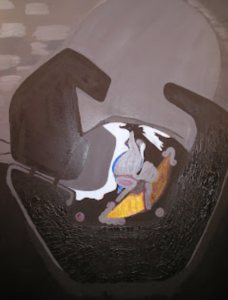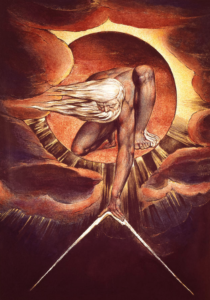Blaise Pascal, Pensee number 84: It is with rash insolence that we belittle the great to our own measure, as when talking of God.
Matthew 11:27 Neither doeth anyone know the Father, but the son, and he to whom it shall please the son to reveal him.
Matthew 7:7 Those who seek God find him.
We live on a planet orbiting what is known as a main sequence star, that is, rather common place. Our sun orbits the galactic center and is imbedded in a so called arm of its galaxy; the Milky Way galaxy. The Milky Way is a spiral galaxy. It has several arms and is disk shaped with a bulge at the center. The approximate distance from the sun to the center of the galaxy is about 26,600 light years. (When I studied astronomy some years ago that number was thought to be 30,000.) The diameter of the whole system is approximately 100,000 light years. It takes 225 million years for the sun to complete an orbit around the center of the galaxy. Now the sun, as a main sequence type star, has an expected life span of nine billion years of which it has lived about half. That means that it has completed about 20 orbits and has about the same number to go during its remaining life. The Milky Way contains between 100 and 400 billion stars.(A 2020 article on this.)
That gives a little perspective to what follows, I hope. Everything I know, understand, and so forth, is nothing more than a fly speck on the moon. So, as is said nowadays, your mileage may vary. I certainly have no more standing than anyone else to comment on the subject matter at hand. It is by the Lord’s blessing, I suppose, that I have such inclinations in the first place.
U Chan Htoon, former Justice of the Burmese high court, spoke to the Sixteenth Congress of the International Association for Religious Freedom at the University of Chicago, August 12th, 1958. In 1961 G.V. Desani delivered the lecture “Vipassana Bhavana, Yoga, and Other Topics” to the diplomatic corp at the Israeli ambassador’s residence in Rangoon, Burma. Justice Htoon was in attendance.
In Buddhism we try to avoid the use of the word “spirit” because this may be taken to imply some kind of enduring entity…
He then goes on to claim it should be understood, rather, as a psychic process. I take this to mean it does not endure except in a (local) relativity-complex in the same sense that for movement (of bodies) to exist there must be a multiplicity of “bodies”, that is, more than one. Movement is relative only. More on this later.
It is further stated that “…rebirth is not the reincarnation of a “soul” after death, but more precisely it is the continuation of a current of cause and effect from one life to another. There is nothing in the universe that is not subject to change, and so there is no static entity which can be called a “soul”. A being is the totality of five factors; material, the physical body, sensations, perceptions, volitions, and consciousness. “All these factors are undergoing change from moment to moment and are linked together only by the causal law – the law that ‘this having been, that comes to be.’ Hence Buddhist philosophy regards a being not as an enduring entity but as a dynamic process.”
He goes on the claim that Nibbana is permanent and characterizes it as release from the realm of becoming, samsara. It has no qualities, no relative values which always require, what he calls a “relativity-complex”. Positive and negative attributes depend on one another for their existence, for instance. Also, light(ness) and dark(ness) being opposite poles of a “relativity_complex” depend on one another for their existence, too. Neither is absolute. In the Desani lecture cited above the claim is also made that Nibbana (Nirvana) is permanent.
Michelson and his colleague Morely, tried to establsh the absolute existence of the aether. Many thought at the time that it was required to have a universal medium whereby light was propogated. He found instead that the aether did not exist. Subsequently Albert Einstein explained that the speed of light was dependent on the (an) observer. The speed of light is only relative to an observer. Einstein also said, relevant to this, that there is no natural rest-frame in the universe. This leads me to speculate that were the universe a single body light would not exist, just as movement wouldn’t. There must be that relativty-complex. Also, I find it interesting that Einstein wrote, per Mr. Htoon, that “if there is any religion that is acceptable to the modern scientific mind, it is Buddhism.” I tend to claim, however, that Buddhism is not a religion because there is no personal God. Buddha never claimed to be a Lord or God in the flesh. Jesus was circumspect in this. He did say “I am the truth, the life, and the way. No man cometh to the father except by me.” Also, “Believest thou not that I am the Father, and the Father in me? The words that I speak unto you I speak not of myself: but the Father that dwelleth in me…” John 14.
Commentary:
God can’t have self experience without descending into matter and assuming corporeal form(s). The “Word” is made flesh in order that God, the Divine creative spirit can have self knowledge. That is, in this writer’s mind, the purpose and meaning of life. The story of Jesus Christ is a metaphor for this. And, of course, the so called “relativity-complex” of Justice Htoon is required for this. This writer makes an assumption that the actual stuff of which we are made, the same as the sun, of course, has a kind of self awareness based on sentient forms compounded of the same stuff.
Furthermore, its my premise that U. Chan Htoon didn’t fully understand Judaism and Christianity. Consider Exodus (the Bible), Moses asks God “Who shall I say sent me?” Tell them, God replies, “I Am sends you.” Being itself sends you. I don’t find anything corresponding to this in the lecture.
So, the meaning of Jesus; God descends into matter in order to “re-emerge” an enlightened (fully self realised) being. Why wouldn’t one say the same of the Buddha? and that such beings, all sentient life for that matter, become, along the way, co-creators of the Real, the world. Certainly, it is put forward that Jesus was in hypostatic union with God, the Father. Why couldn’t the same be said for Buddha; 100% man but 100% God, too? Wasn’t he an Jagatguru? Having escaped impermanence in the permanence of Nibbana would one be considered to have also reached the seemingly impossible hypostatic union with the Divine creative spirit, or whatever you want to call it? Would that bit of the sun stuff of which we have the pleasure to be co-compounded realised once and for all exactly what it is? That fly speck? One would needs discover this for oneself.
Said another way, man (sentient life forms) supplies the cosmos with individuality while the cosmos gives man, in return, universality. Enlightened beings realise this whether said explicityly or no. This from my mentor. And this, too, seems relevant: “where the concentration is, there is the persistent, the lasting, the permanent. That to which attention goes is that which returns. In a sense to attend to something is to put consciousness into it, to bring it to life, to self awareness.” Put another way, if there is no observer there is nothing. Also,the recursive process that results in rebirth must be said to gain in vitality by the concentration, self awareness, of the successive lives so attached.
Kamma or Karma, as well as the precept that nothing endures, is permanent, and thus, there is no “soul” that carries forward through successive lives, is best understood, I think, when the Real, the world, is considered as a recursive phenomenon. Recursion, the Fibonacci sequence is the best example I know – 0,1,1,2,3,5,8,13….. – Zero is the still point, of course, wherefrom the “beginning”. It is necessary for any meaning or understanding whatsoever. So, every instance of the Real is a product of the preceding (instances). It is a fractal wherein knowing the still point you know it all. Yes, its a mystery but, clearly, out of nothing comes nothing (Ex nihil, nihil fit). This is why its impossible to explain, why the talk about the ultimate having no attributes, why when the journey is completed one arrives at the beginning but knows the place for the first time. Something happens during the process, the journey! Consciousness? Moreso, all that is happening now added to all that has ever happened equals all that will ever happen. This is, to me, how karma can be grasped. To recap, the purpose of the existence of the elements of recursion in the “relativity-complex” is to source new instances which have no permanence in themselves. They are made to fade. The process, however, is a kind of permanence in the same sense that a river, though ever changing, remains the river, and the instances, drops of water, merge eventually into the sea through ever widening banks. Poetically, they widen to embrace the sea.
Further, as Desani puts it here, For whatever activity undertaken, there is a spirit for that doing and that spirit in time gets a life of its own, gets self awareness as it goes on. These acts eventually become forms of worship. Doing good enhances goodness. Goodness is the reservoir drawn from when acts of kindness are done. And it is thereby increased. These acts are like accretions. Charity grows by use. Doing right this time makes it easier the next and so forth. Of course, it works the same for evil doers. A murderer draws on a different kind of reservoir to do his evil. His evil adds to that and the next time it is easier to follow that path. Evil begats evil, one reaps what one sows. It works that way. Love, Beauty, Truth, begat more of the same, too.
The lecture’s full title is Buddhism and the age of Science. I can’t find it on the net except to purchase but my copy is a Wheel Publication No. 36/37.
This writer’s view is quite different especially concerning what is said about Science. I think they fail to understand Science and its place in the total scheme of human endeavors. I see it, as did Philosopher R.G. Collingwood, as an emergent phenomenon along with art, religion, and other modalities of being in the world. Collingwood’s scheme compares to Soren Kierkegaard’s in that Kierkegaard views faith as such a mode of being. Art, religion, science, history, then philosophy is how Collingwood describes the recursion of these modalities.
It is philosophy that Collingwood thought was the natural culmination of the preceding elements. He describes them in detail, their successes and failings. Here, I write of his work in this regard. Soren Kierkegaard’s work is much more difficult to grasp but I go into it to. Here.
I said above that Buddhism could be thought of as not being a religion in the sense of Judaism, Christianity, Hinduism, and so on. Perhaps it could be better understood as coming after philosophy in Collingwood’s progression, after faith in Kierkegaard’s. If these modes, art and the rest, are truly like the Fibonacci sequence then philosophy is not the final element; neither would Buddhism be were it included. The Sun is, after all, middle aged. Having 20 more orbits to make around the Milky Way, 20 more galactic years to live, I’d imagine we’ll have ample opportunity to plumb the depths of Reality’s infinite malleability.
Collingwood describes philosophy as “consciousness returning on itself”; like a fountain. Pretty image. I think it is a prototype of what Buddhism and, also, the esoteric teachings of the yogis, is. My mentor’s writings give the best jumping off place for what might be the next big thing in mental culture.
In working this up I am indebted to David Warren and his piece on God’s Existence, here. I love this quote: “For science, or human knowledge more broadly, God is not an hypothesis, but an Axiom. Start in Aristotle, if you will, to see that the world has no purchase on sense, without the Unmoved Mover. The “Five Ways” by which the inevitability of God was demonstrated by Thomas Aquinas, and the related ways in which this was done by others before and after him, are easily misunderstood, because they are not proofs of an hypothesis but recursions. They show, without the “God Axiom,” that there can be no causation, no change, no being in itself, no gradation, no direction to an end. We need a Still Point, from which to depart. It cannot be hypothesized. It is too simple for that. You need to assume it even to contradict it.”
Finally, I write here about entelechy, the end within. According to Buddhist thought there is no end, no beginning, only the process has any claim on reality. So, any end within dependes on a local framework, a relativity-complex, in Mr. Htoon’s usage. I’d put forward that if you must have a concept of the end within then go with Mr. T.S. Eliot’s beautiful notion that after all our struggles, trouble, turmoil, conquests, losses, “we arrive where we started but know the place for the first time.”


